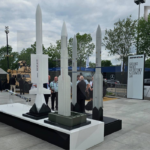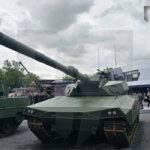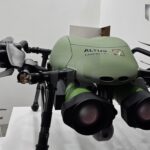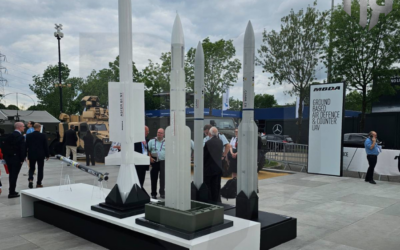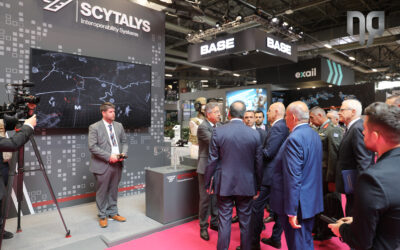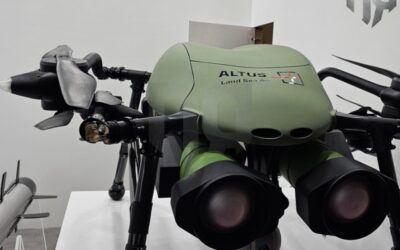With such a large number of interested attendees at MBDA’s pavilion at the Eurosatory 2024 Defence exhibition, the stand reminded of an…
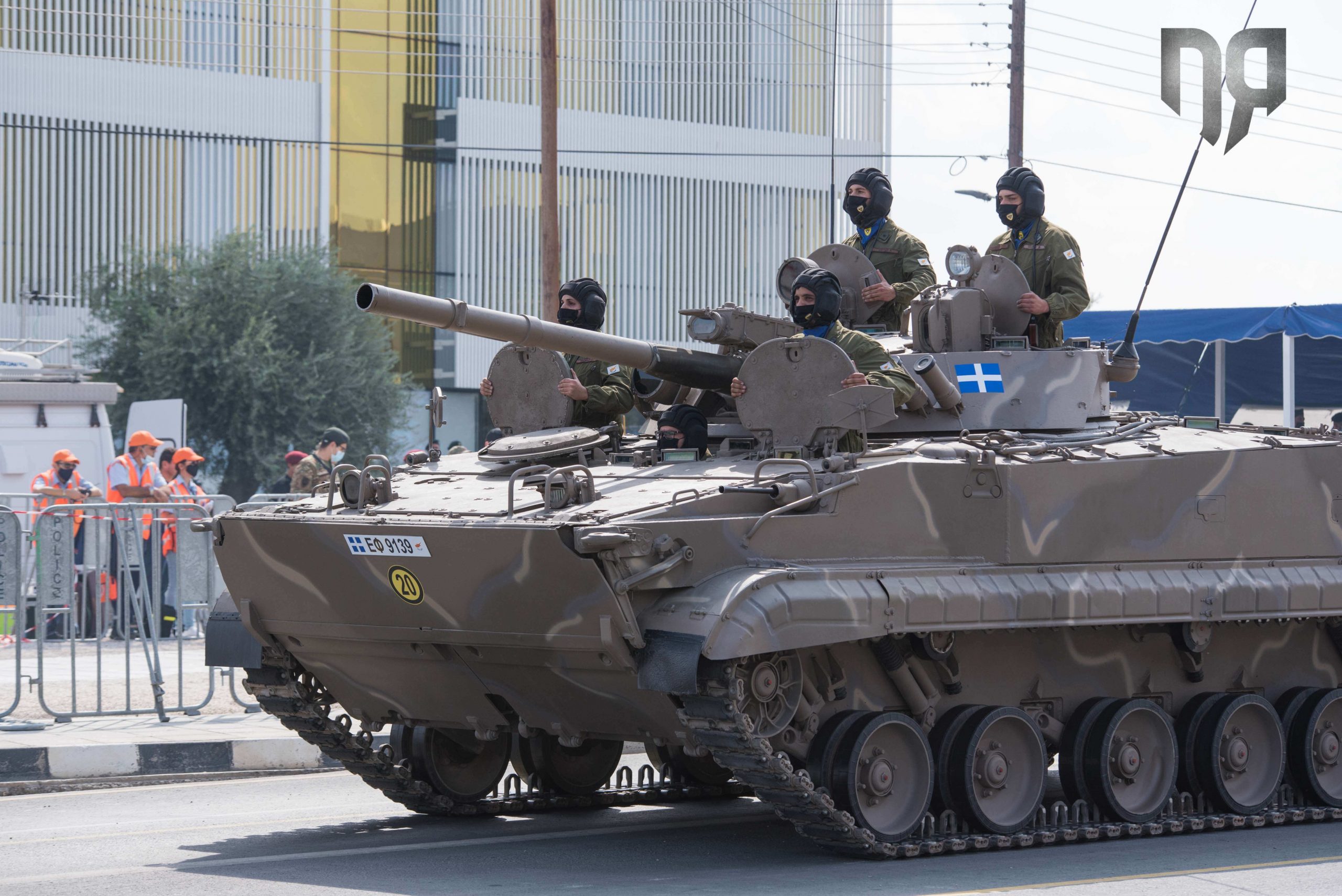
* Andreas Pogiatzis
The BMP-3 amphibious Infantry Fighting Vehicle (IFV) is the successor of the BMP-2 (which is in turn the successor to the BMP-1 in service with the Hellenic Armed Forces) as well as the BMD-2 airborne infantry fighting vehicle used by the Russian Airborne Forces in Ukraine.
The BMP-3, produced by the Russian industry Kurganmashzavod, has been in service since 1987 not only with the Russian Army, but also with a number of Armed Forces in Asia and the National Guard in Cyprus.
The Russian IFV has been in service with the Cypriot National Guard since 1995, with a total of 43 vehicles forming the 28th Infantry Fighting Vehicle Battalion, a unit belonging to the XX Armored Brigade of the National Guard rather than a Mechanized Brigade. Upon their arrival on the island, the IFVs were considered modern vehicles capable of countering Armored Personnel Carriers (APCs) and the M48 (T1/T2) tanks, which are still in service with the Turkish Occupation Forces in the Northern Part of the island.
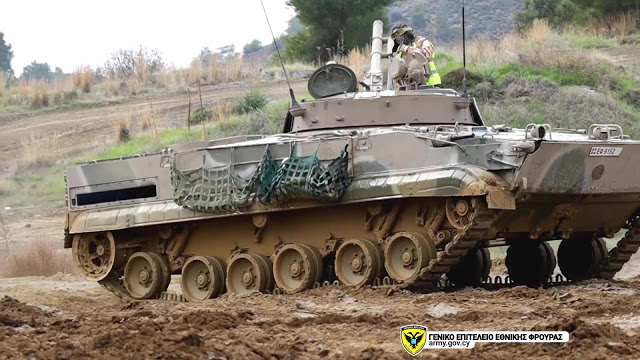
BMP-3 Technical Characteristics:
- Weight: 18.7 tons (basic version)
- Length: 7.14 meters
- Width: 3.2 meters
- Height: 2.4 meters
- Crew: 3 (Commander, Gunner, Driver)
- Transportation capacity: 7 people +2 at the front seats
- Engine: Diesel UTD-29M four-stroked, liquid-cooled, 500 hp
- Motion in water: Snorkel use and water-jet propulsion with 2 X Auger-type propellers
- Transmission system: 4-speed manual transmission (plus reverse)
- Endurance: 600 km
- Maximum Speed: 70 km/h / 45 km/h / 10 km/h (road/off road/water)
Armament
The BMP-3 has high firepower and its main armament includes a 100 mm gun (2A70) and a coaxial 30 mm autocannon (2A72).
Also read: National Guard | Live fire with Refleks anti-tank missile by T-80 tanks – VIDEO & Photos
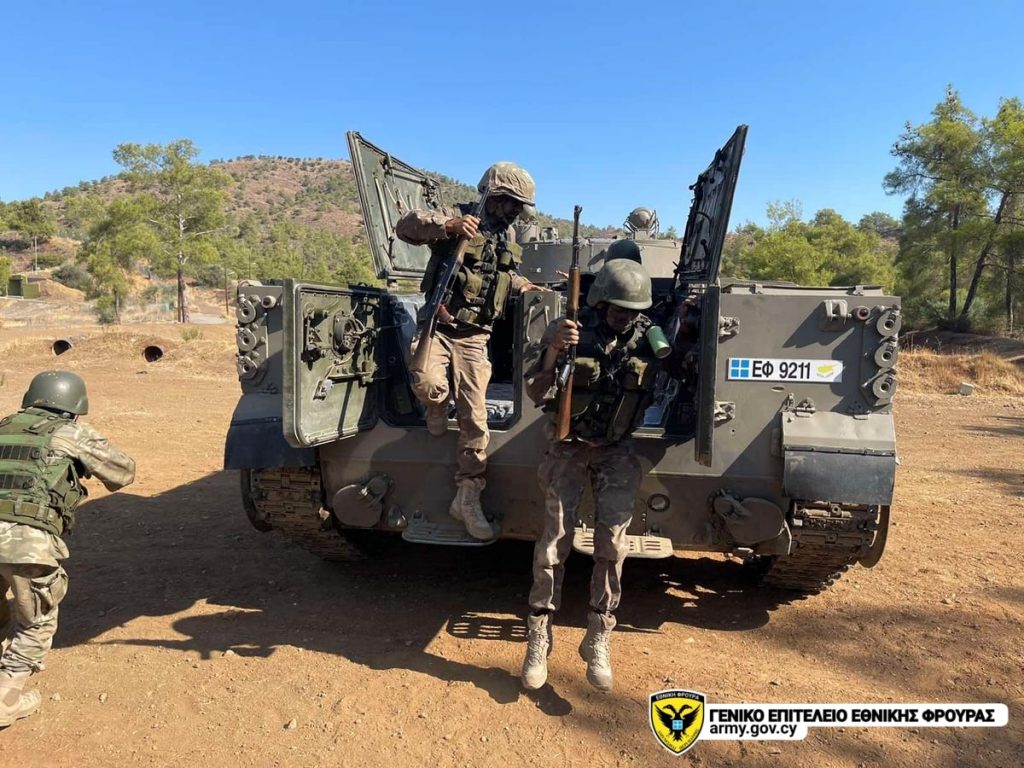
The gun can fire 100 mm shells and 9M117 Anti-Tank Guided Missiles (ATGMs), a capability also found on the Russian-made T-80U Main Battle Tank (MBT) of the National Guard (capable of firing the 9M119M Refleks missiles).
The effective range of the HE-FRAG 3OF32 ammunition and the 9M117 missiles is 4 km. The IFV can carry 22 HE-FRAG high-explosive missiles in the 2K3 auto-loading system, with 40 missiles being the total vehicle payload. In addition, the vehicle can carry eight 9M117 anti-tank missiles.
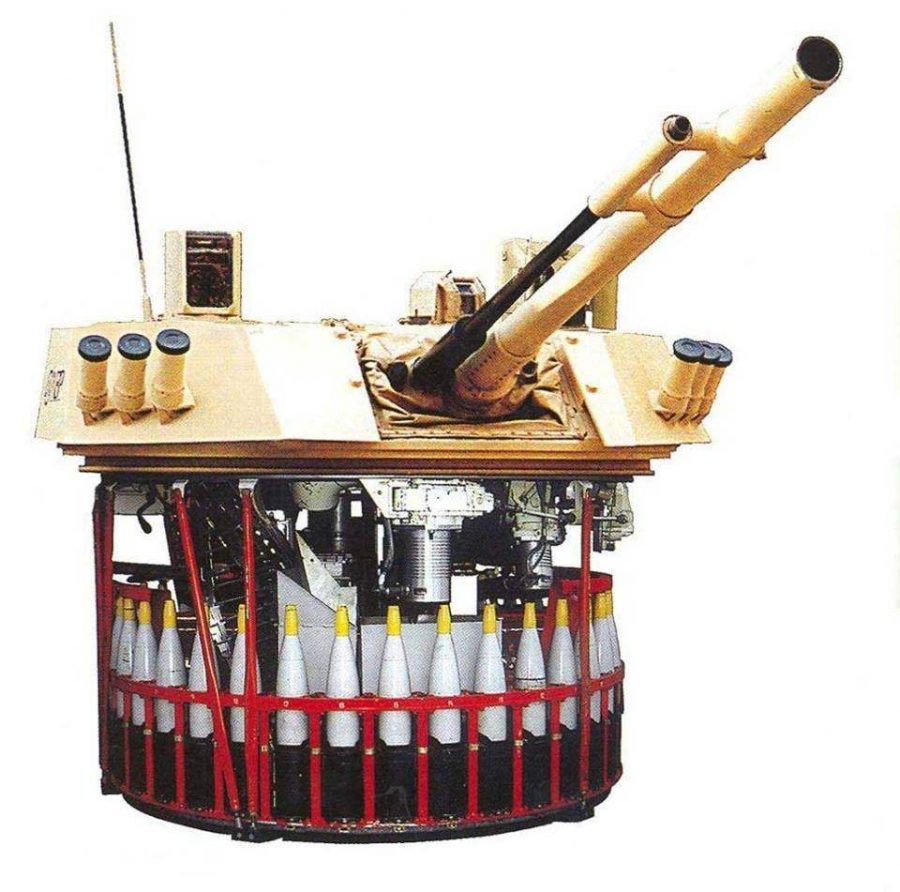
The main gun fire rate is up to 10 rounds per minute, while the 9M117 anti-tank missile has the ability to strike tanks with explosive reactive armor (ERA) as well as slow-moving, low-flying targets such as helicopters.
The BMP-3 armament includes, as mentioned above, the 30mm 2A72 autocannon, mounted coaxially on the vehicle’s turret, with a day and night aiming system.
The 2A72 autocannon carries a total of 500 rounds (armor-piercing and high-explosive incendiary rounds) with a firing rate of 350 to 400 missiles per minute. Its effective range is from 1500 to 2000 meters. The vehicle also features a 7.62 mm PKT machine gun with 2000 rounds in its turret as well as 2 additional 7.62 mm machine guns with 2000 rounds each at the front of the vehicle to engage infantry units.
Armor – Protection
In terms of protection, the turret is made of high-strength aluminum alloy, with a thick steel-spaced armor shield over its front arch, which protects against 30 mm rounds at distances of 200 meters. In its basic version, the vehicle offers protection against fire from light weapons and machine guns up to 12.7 mm (0.50”).
The vehicle also features equipment for CBRN (Chemical, Biological, Radiological, Nuclear) warfare, with a filter ventilation unit as well as hermetic sealing. The system is located at the rear of the vehicle which also helps to reduce its thermal signature.
As part of its main armament, the BMP-3 is also equipped with 2 triple 81 mm “Tucha-2” type smoke grenade launchers, while – like the rest of the Soviet-made armored vehicles – it can create a smoke screen by injecting fuel into the exhaust manifolds.
The BMP-3 armor can be reinforced with a Kaktus-type explosive reactive armor (ERA) kit and additional side armor tiles which can resist armor-piercing ammunition of 0.50” or larger caliber.
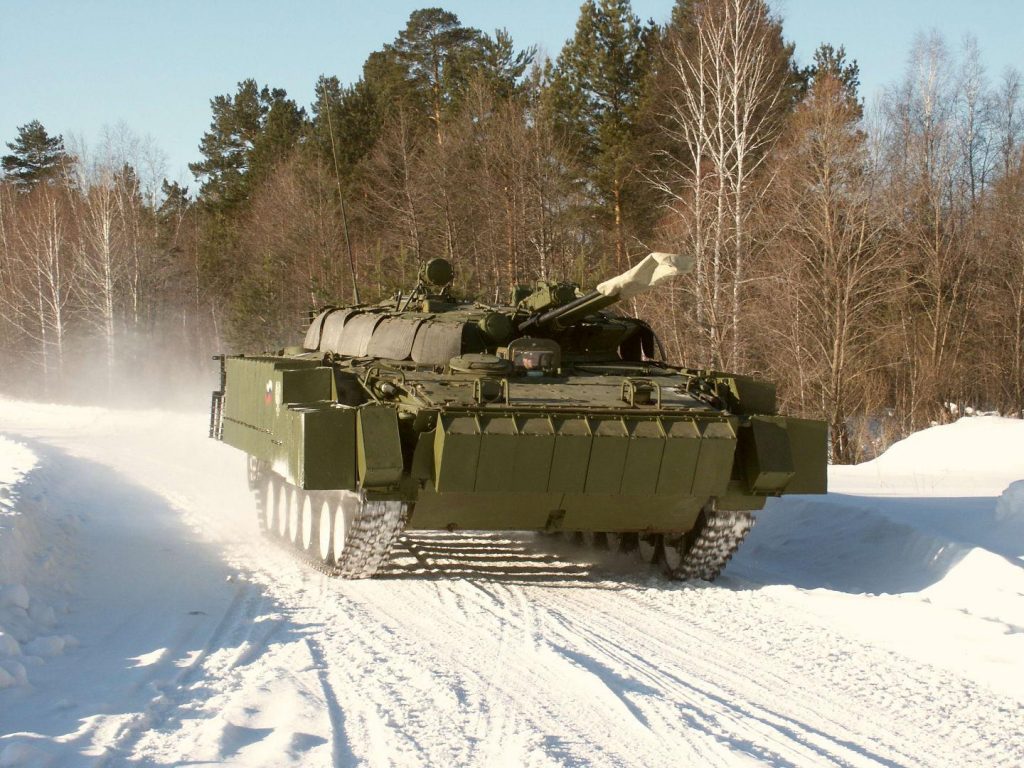
In various defence exhibitions in Russia, many versions of the BMP-3 featured additional slat armor for protection against rocket-propelled grenades (RPGs).
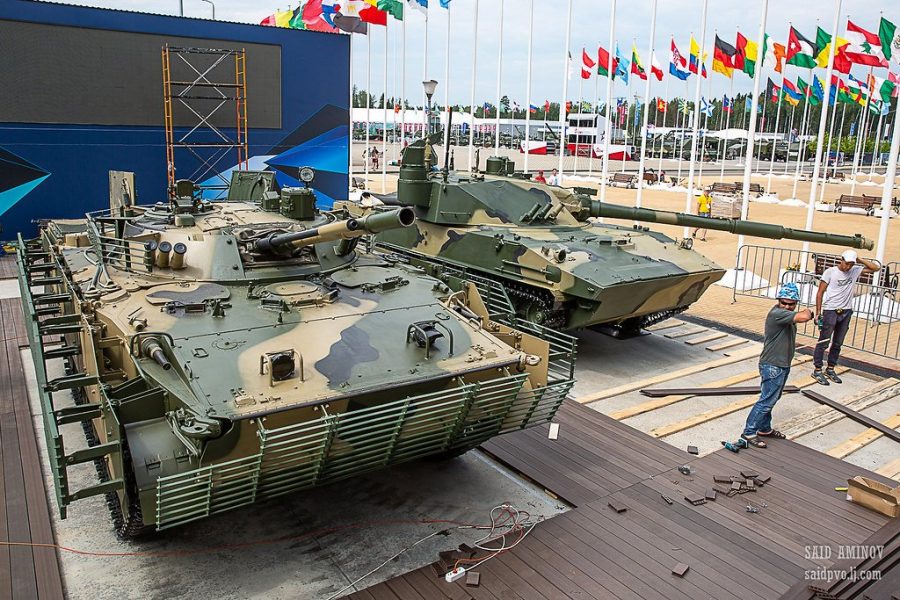
The active protection system ARENA-E offers additional protection to the BMP-3. The said system is also available for the T-80MBTs and it consists of radar for detecting and monitoring incoming threats such as anti-tank missiles, computers, and processing units as well as interception ammunition. After detecting the threat, the system activates one launcher ( it can carry 22-30 launchers), mounted all around the vehicle turret. These launchers contain explosives with fragments which eliminate the target within a distance of 5-10 m from the vehicle.
Unlike the ARENA-E system, another soft-kill-type option for active protection is the SHTORA-1 electro-optical jammer that disrupts semi-automatic command to line-of-sight (SACLOS) anti-tank guided missiles. The system was mainly installed on the BMP-3M version and in Cyprus it is found on the T-80UK Command Main Battle Tanks.
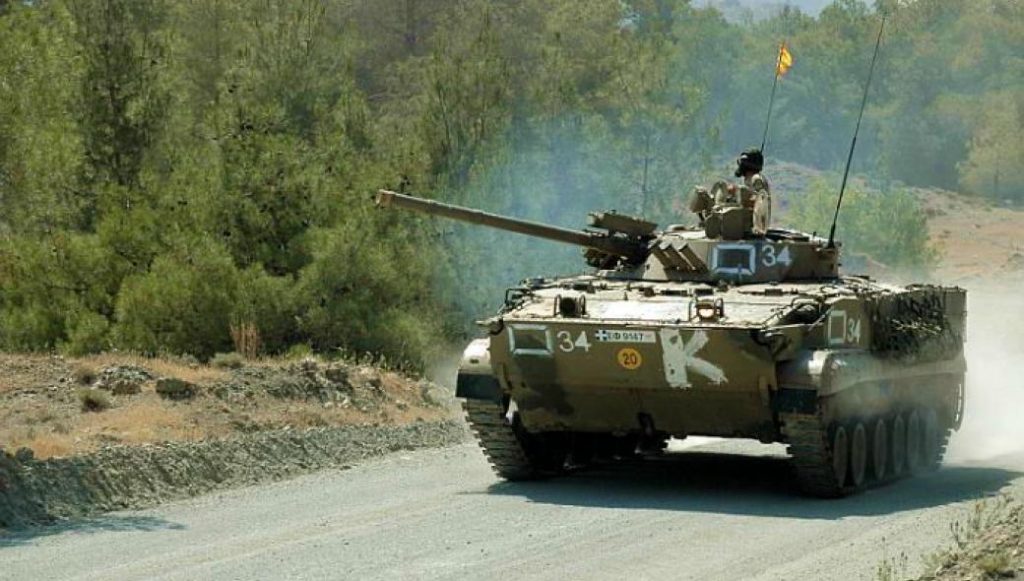
Fire Control System and Electro-optics
The BMP-3 features an Automatic Fire Control System, a 1V539 ballistic computer, a 2E52 stabilizing system, and the 1D16 laser rangefinder. The gunner uses the 1K13-2 day-and-night guidance device and a PPD-1 sight. The commander can use the IPZ-10 combined optical sight and the TKN-3 day/night vision device.
Newer versions may carry different types of sights, such as the SOZH-M of the Belarusian Peleg, a company that also upgraded the night-vision sights of the National Guard’s T-80Us.
Also read: T-80U 25 years of the National Guard and its upgrade options – Infographics & VIDEO
Lessons from Ukraine and potential National Guard options
The BMP-3, as has become evident in the Ukraine war in the last quarter, faces the same serious survivability problems as the Soviet-made heavier tanks with improved protection. The problem arises after an anti-tank hit (even if it is not 100% successful) which nevertheless usually causes ignition in the ammunition carried by the vehicle, resulting in the explosion of the entire ammunition payload with the characteristic detachment of the turret from the vehicle.
Due to their low-profile design, Russian-made armored vehicles carry their ammunition under their seats and not at the rear of the turret in a sheltered compartment with blow-outs, according to Western design standards. As a result, after a hit the ammunition is ignited leading to high pressure and temperature (the jack-in-the-box effect) which literally hurls the vehicle’s turret with detrimental effects on the personnel inside the vehicle.

The National Guard’s options in terms of the BMP-3 are already limited due to the rapid geopolitical changes owing to the war in Ukraine, which makes its already problematic maintenance even more difficult.
As is known, Cyprus is no longer one of Russia’s friendly countries, due to the implementation of European sanctions against Moscow, while the western turn of the country in recent years makes it clear that BMP-3s, like other Russian weapon systems in service with the National Guard, will inevitably need to be replaced in the future.
However, until their gradual withdrawal, which requires a large amount of money, and since the BMP-3 IFVs together with the T-80U tanks constitute the backbone of the only Armored Brigade in the National Guard, it is imperative at least to increase their survivability so long as their operational availability is first ensured by finding spare parts.
In our view, the ways in which this could potentially be implemented are the following:
- Installation of additional slat armor (such as the one in the UAE’s BMP-3) and/or passive armor with advanced composite materials for greater protection in attacks of “conventional” anti-tank weapons (360 degrees). Unfortunately, as was also seen in Ukraine, the grid-type armor on the roof of the tanks was not effective in top attack hits. Only active protection systems can potentially counter such threats (hard-kill), but these may be installed on condition, since apart from the cost, other factors such as the system’s power demands need to be considered.

- Optimization of the tactical use of IFVs in order to reduce the risk of exposure to anti-tank weapons. The use of IFVs by the Ukrainians to set up ambushes against mechanized units of the Russian Forces and even tanks in residential and non-residential areas is proving effective.
- Use of passive concealment measures such as infrared spectrum camouflage nets to reduce the vehicle’s electromagnetic footprint.
- Situational Awareness enhancement via the usage of command and control systems and/or drones. Recent videos circulating on the Internet depict the widespread use of civilian-type multi-copter drones by Ukrainians to gather valuable real-time information on the formation of enemy forces.
It is a given that with the development of new systems and especially 5th generation anti-tank weapons, as we are currently witnessing in Ukraine, but as we also did in Nagorno-Karabakh, armored vehicle designers are updating their information to be able to offer solutions capable of countering emerging threats.
The goal is in any case to first have the political will to proceed with necessary armaments hence to maintain the army’s defence capabilities at acceptable levels and then to thoroughly consider the proposals of specialists.
READ MORE
KNDS | Showcases full range of LEOPARD battle tanks at EUROSATORY
KNDS continues to expand its technological advantage in the field of main battle tank development, as we have witnessed at the Defence and…
THEON SENSORS | Distinguishing appearance at EUROSATORY 2024 with new range of products
THEON SENSORS attended the International Defence and Security Exhibition EUROSATORY 2024 as an ambassador of Greek innovation…
EUROSATORY 2024 | Missile Artillery Solutions from MBDA
With such a large number of interested attendees at MBDA’s pavilion at the Eurosatory 2024 Defence exhibition, the stand reminded of an…
KNDS | Showcases full range of LEOPARD battle tanks at EUROSATORY
KNDS continues to expand its technological advantage in the field of main battle tank development, as we have witnessed at the Defence and…
THEON SENSORS | Distinguishing appearance at EUROSATORY 2024 with new range of products
THEON SENSORS attended the International Defence and Security Exhibition EUROSATORY 2024 as an ambassador of Greek innovation…
Ministry of Defence | Organization of Hellenic EDF Info Day
A Conference entitled “EDF Info Day” is organized in the Amphitheater of the National Gallery on Tuesday, July 9 from 09:00 to 17:00.
ALTUS LSA | Participates in EUROSATORY 2024 with KERVEROS in the foreground
The participation of ALTUS LSA in EUROSATORY 2024 is among the Greek participations of operational significance.
Freddy Beleris | Ιn jail until October
The elected mayor of Heimarra and Member of the European Parliament of New Democracy will remain in prison until October…







